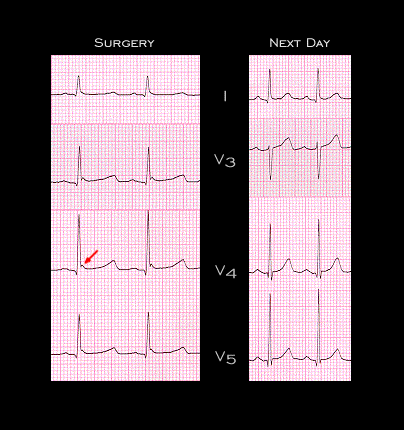
The ECG on the left was recorded immediately after a prolonged surgical procedure performed under hypothermic conditions. The patient’s body temperature was 30 degrees C (86 degrees F). Note again the J wave at the end of the QRS complex (arrow) and the markedly prolonged QT interval (500 ms). At this time, the serum calcium concentration was low (7.8 mg/dl) and, as mentioned earlier (see 5.4.0.and 5.4.2), this contributed to the QT prolongation. The tracing on the right was recorded the following day when both the patient’s body temperature and serum calcium concentration had returned to normal. The J wave is no longer present and the QT interval is now normal.
